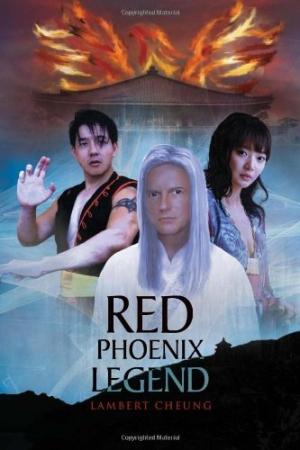Red Phoenix Legend
With Kung Fu and magic, a young Chinese man finds his destiny and saves China from an evil despot in this debut mythological fantasy book by Lambert Cheung.
A group of warriors called the Endeavor of Light, who worship the deity known as the Red Phoenix, do battle with a Western man, Valdrayan, whom they adopt and teach their ways. Soon after, one of Endeavor’s members, Chong Ling, turns traitor and partners with the Insideous Teng Fei to kill China’s emperor and the members of the Endeavor of Light in a bid for ultimate power. As with most myths and legends, however, two children survive the coup: a child born to two Endeavor of Light warriors and Xing, the youngest of the murdered emperor’s children.
Valdrayan raises the last of the Endeavor of Light, Jasai, on a steady diet of tales about the warriors and their Kung Fu battles of good versus evil. Once his village is destroyed and his destiny explained, Jasai sets off on his quest, becoming a martial arts legend in the Nanjing arena along the way. Meanwhile, Xing is being raised by the despotic Teng Fei to become his successor, though Xing is only biding his time until he can get revenge for the death of his parents.
Valdrayan is eventually captured. He meets Xing in the palace and learns of the secret passages riddled throughout. When Valdrayan escapes to meet with Jasai, they formulate a plan to use the secret passages, to battle Teng Fei and Chong Ling, and to restore heaven and earth into balance with the return of Xing to power and with worship of the Red Phoenix.
Cheung’s writing style is fairly simplistic and the plot linear. The text contains many improper word choices, such as “dawning” instead of “donning,” suggesting that English may not be Cheung’s first language. Frequent comma errors and typos indicate the need for further editing. Several page-long descriptions of every Kung Fu move used by the warriors in each battle slow the plot to a crawl.
Redundancy is another issue throughout the book. One example occurs when Jasai says, “We could all die … but for me it is better to die trying.” In the next paragraph, the same point is reiterated multiple times: “More of the people of China will die in years to come … and if we give up now, my people would have died for nothing. Those who have died here today would have died for nothing. What we do in life before the time we die is what truly matters.”
Cheung’s dialog also feels clichéd and stilted at points. Moments like, “We’ve killed many, and now I see that we’re gonna have to finish the job by killing you,” give the book the feeling of a rather dated martial-arts B-movie. The cover of Red Phoenix Legend bears a striking resemblance to posters for the martial arts movie (and videogame), Mortal Combat starring Christopher Lambert. The novel reads like a 1960s Bruce Lee movie combined with a violent videogame. While this may appeal to some, taken along with the other problems in the text, Red Phoenix Legend is unlikely to hold the interest of most readers. Cheung’s book might possibly be better served as a graphic novel for young adults.
Reviewed by
DeAnn G. Rossetti
Disclosure: This article is not an endorsement, but a review. The publisher of this book provided free copies of the book and paid a small fee to have their book reviewed by a professional reviewer. Foreword Reviews and Clarion Reviews make no guarantee that the publisher will receive a positive review. Foreword Magazine, Inc. is disclosing this in accordance with the Federal Trade Commission’s 16 CFR, Part 255.

